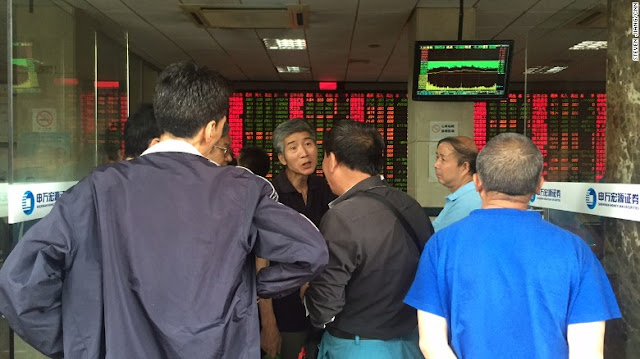U.S. Stock Indexes Move Back – Drop in Oil Prices
Stock indexes of U.S. moved back from its record levels due to drop in oil prices which overstretched energy stocks. The prices of oil dropped by 1.6% in cutting trading after the reports of the U.S. government of a surprise crude stockpile build. The energy index of S&P 500 fell by 0.9% and Exxon Mobil – XOM.N 1.5% drop was the top strain on the S&P 500 and the Dow. Since late June, a rally has left the S&P to almost 7% in 2016 as prospects of constant low interest rates motivated investors in buying into U.S. equities. The standard index this month had hit four record intraday highs.
Regional investment director for The Private Client Reserve of U.S. Bank, Tim Dreiling had stated that once they had seen the new inventories, it certainly moved energy far lower dragging almost everything down.He further added that to grind higher, earnings improvements needed to be seen and that would come from economic improvement. The industrial average of Dow Jones – DJI had declined by 0.2% to finish at 18,495.66 points while the S&P 500 .SPX lost 0.29% to 2,175.49 points. The NASDAQ Composite .IXIC had dropped by 0.4% to 5,204.59.
Trading Volume – Lack of Market-Moving Information
Out of the 10 major S&P 500 index, six were lesser. Due tolack of market-moving information in a traditionally low-volume season, trading volume had been low. Around 5.92 billion shares had changed hands on the U.S. exchanges when compared to the 6.45 billion regular averages for the last 20 meetings. The shares of Walt Disney – DIS.N had ascended by 1.23% after the company recently had informedthe results which beat estimates stating that it is purchasing a 33% stake in video-streaming firm BAMTech. The stock offered the biggest increase to the S&P 500 and the Dow.
SunPower shares had fallen by 30% after the company had fluctuated to a second quarter loss, lowering its full year revenue prediction, stating that it would restructure its business. Perrigo dropped 11% to $85.06 after the company had reported a lower than expected earnings and dropped its remunerations forecast. JD.com soared to 8.6% to $24.28 after the company had stated the revenue within its forecast. The stock had given the biggest increase to NASDAQ. Weakening matters outstripped progressing ones on the NYSE by 1,610 to 1,259 and on NASDAQ; the issues dropped by 1,798 and advanced by 924.
Low Volume Could Skew Market in Any Direction
The S&P 500 index portrayed 18 new 52-week highs together with two new lows though the NASDAQ verified 61 new highs and 28 new lows. Market strategist at Prudential Financial, Quincy Krosby had stated that low volume was fairly standard at that time of the year and August seems to be a very irregular month and if one has low volumes, it could skew the market in any direction and that is what we have today. The trading volumes had been near year low since Monday as the second-quarter earnings seasons tends to wind down. Dollar index had slipped for the second straight day as weak U.S. productivity data on Tuesday dimming a bit the prospects of economic growth which would probably discourage the Federal Reserve from increasing the interest rates.













